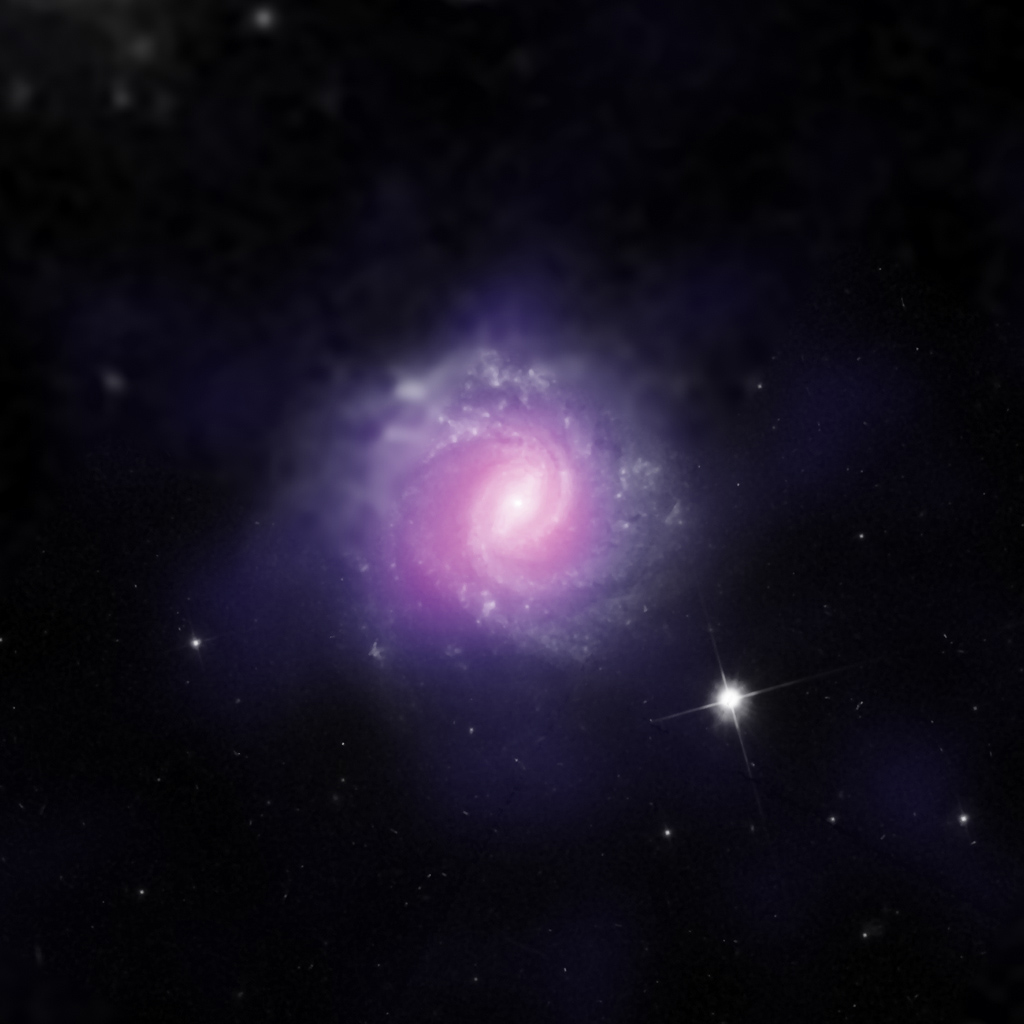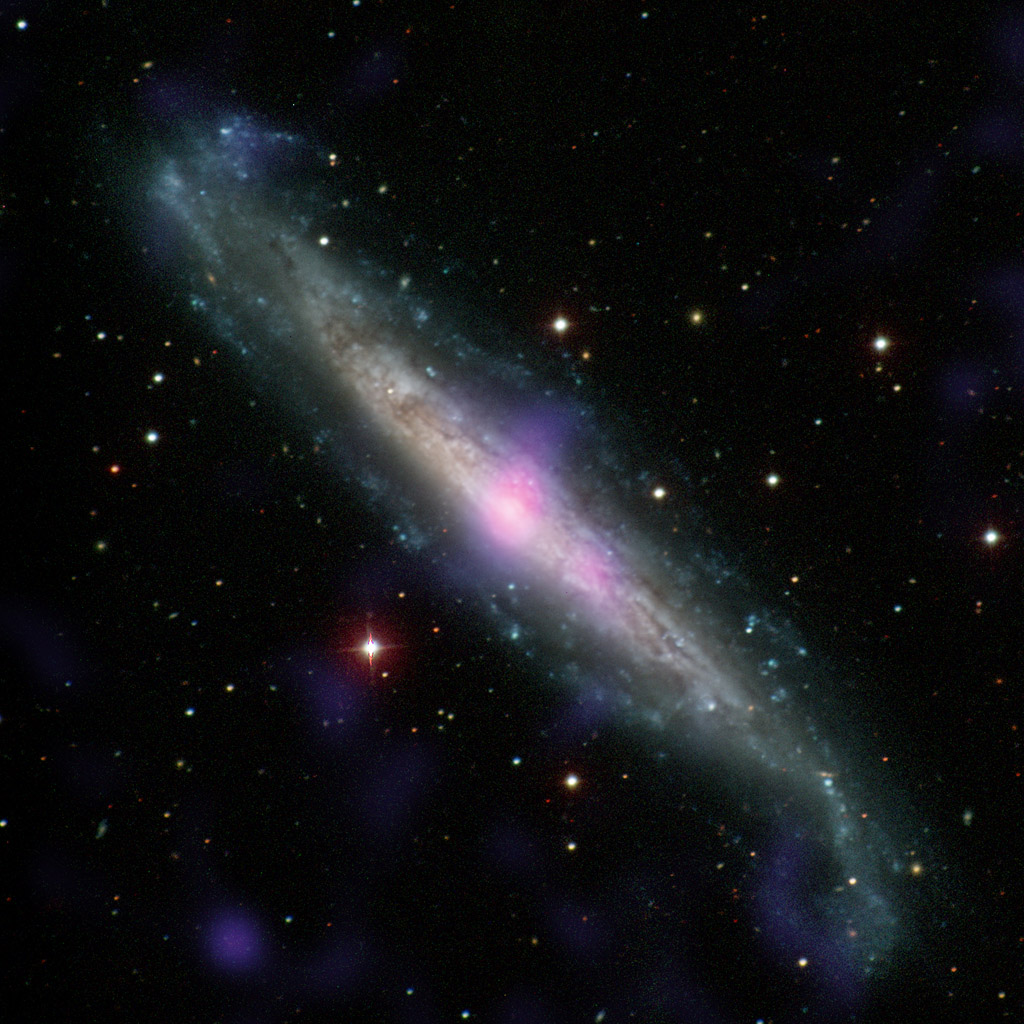NASA | JPL-Caltech | NuSTAR | 2017 Jan 07
Monster black holes sometimes lurk behind gas and dust, hiding from the gaze of most telescopes. But they give themselves away when material they feed on emits high-energy X-rays that NASA's NuSTAR (Nuclear Spectroscopic Telescope Array) mission can detect. That's how NuSTAR recently identified two gas-enshrouded supermassive black holes, located at the centers of nearby galaxies. ...IC 3639 -- Image Credit: NASA/JPL-Caltech/ESO/STScI
NGC 1448 -- Image Credit: NASA/JPL-Caltech/Carnegie-Irvine Galaxy Survey
Both of these black holes are the central engines of what astronomers call "active galactic nuclei," a class of extremely bright objects that includes quasars and blazars. Depending on how these galactic nuclei are oriented and what sort of material surrounds them, they appear very different when examined with telescopes.
Active galactic nuclei are so bright because particles in the regions around the black hole get very hot and emit radiation across the full electromagnetic spectrum -- from low-energy radio waves to high-energy X-rays. However, most active nuclei are believed to be surrounded by a doughnut-shaped region of thick gas and dust that obscures the central regions from certain lines of sight. Both of the active galactic nuclei that NuSTAR recently studied appear to be oriented such that astronomers view them edge-on. That means that instead of seeing the bright central regions, our telescopes primarily see the reflected X-rays from the doughnut-shaped obscuring material. ...
Hunting hidden supermassive black holes
Durham University | 2017 Jan 07
IC 3639 - A New Bona Fide Compton-Thick AGN Unveiled by NuSTAR - Peter G. Boorman et al
- Astrophysical Journal 833(2):245 (20 Dec 2016) DOI: 10.3847/1538-4357/833/2/245
arXiv.org > astro-ph > arXiv:1610.08997 > 27 Oct 2016
- arXiv.org > astro-ph > arXiv:1701.00497 > 02 Jan 2017

